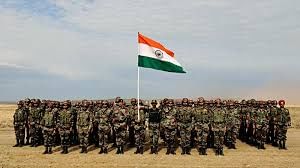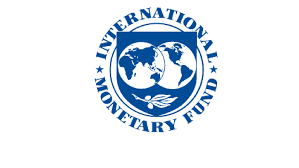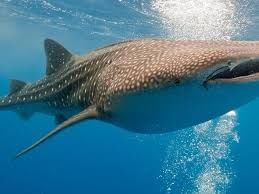UPSC Daily Current Affairs: 31 August 2024 | Current Affairs & Hindu Analysis: Daily, Weekly & Monthly PDF Download
GS3/Economy
Global Fintech Fest (GFF) 2024
Source: The Hindu

Why in News?
PM Modi addressed the Global Fintech Fest (GFF) 2024 at the Jio World Convention Centre in Mumbai, Maharashtra. GFF is jointly organized by the Payments Council of India, the National Payments Corporation of India, and the Fintech Convergence Council. It aims to showcase India’s strides in Fintech and bring together key stakeholders of the sector.
Key highlights of speech delivered by PM Modi at GFF 2024
About
- Fintech, short for financial technology, involves using technology to provide financial services more efficiently and accessibly.
- This field includes innovations aimed at automating and enhancing the delivery of financial services, often via digital platforms.
- Applications
- Digital Payments: Platforms that enable users to make payments and conduct financial transactions online or via mobile devices, such as UPI and Google Pay.
- Lending and Borrowing: Online services providing loans to individuals or businesses, utilizing algorithms to evaluate creditworthiness (e.g., peer-to-peer lending, digital loan apps).
- Wealthtech: Platforms for investment management and financial planning, including robo-advisors and online brokerage services.
- Blockchain and Cryptocurrency: Technologies that enable secure, decentralized financial transactions, involving cryptocurrencies like Bitcoin.
- Regtech: Technologies assisting financial institutions in complying with regulatory requirements efficiently, often through AI and big data.
- Neobanking: Digital banks that provide financial services exclusively online, without physical branches.
Benefits
- Financial Inclusion: Fintech companies have expanded access to banking for underserved populations, particularly in rural areas, through mobile banking and digital wallets.
- Job Creation and Economic Growth: The fintech sector has significantly contributed to job creation in various fields, stimulating economic demand and supporting small and medium-sized enterprises (SMEs).
- Digital Payments Revolution: The rise of digital payments has enhanced transparency, reduced corruption, and made transactions more secure in India.
- Impact on Urban and Rural Divide: Fintech has narrowed the gap between urban and rural financial services, offering equal access through mobile technology.
Concerns
- Fintech Companies and Money Laundering Concerns: A Parliamentary Committee raised issues regarding fintech companies being exploited for money laundering, citing a specific app involved in scams.
- Fraud Trends and Ratio: While transaction volumes have surged, the rate of fraudulent transactions remains low, with UPI users affected by fraud at just 0.0189%.
India's Fintech Revolution
- Global Recognition: Modi noted that India's fintech diversity is now on par with its cultural diversity in the eyes of international visitors.
- Investment and Growth: The sector has attracted over $31 billion in investments over the past decade, alongside a 500% increase in startups.
- Infrastructure Development: The surge in broadband users from 60 million to 940 million has been pivotal in driving this fintech revolution.
Jan Dhan, Aadhaar, and Mobile Trinity
- Digital Transactions: Integration of Jan Dhan accounts, Aadhaar, and mobile technology has facilitated a significant portion of global digital transactions in India.
- Impact of UPI: India's Unified Payments Interface (UPI) has transformed banking accessibility, including in rural regions.
Financial Empowerment
- Women Empowerment: Jan Dhan Yojana has played a crucial role in empowering women, with significant benefits seen through self-help groups.
- Mudra Yojana: This scheme has disbursed Rs 27 trillion, greatly benefiting women and promoting financial inclusion.
Transparency and Governance
- Curbing Parallel Economy: Fintech has enhanced transparency in financial transactions, particularly through Direct Benefit Transfer (DBT) mechanisms.
Social Impact of Fintech
- Urban-Rural Gap Bridging: Fintech innovations enable farmers and other rural demographics to manage finances effectively using mobile technology.
- Democratization of Financial Services: Access to credit, investments, and insurance has improved significantly, aiding small vendors through various government schemes.
Advancements in Digital Banking
- Neobanking and Digital Only Banks: Modi highlighted the emergence of neobanks and the transition towards digital payment systems like QR codes.
- Account Aggregators and e-RUPI: These innovations are enhancing financial management for small businesses globally.
Cybersecurity and Regulation
- Policy Support: The government is fostering fintech growth by removing obstacles like Angel Tax and supporting research initiatives.
- Cyber Fraud: Emphasizing digital literacy and strong regulations is crucial for combating cyber fraud.
Sustainable Economic Growth
- Green Finance: The government is prioritizing sustainable growth through green finance and financial inclusion strategies.
- Future Outlook: Modi is optimistic about the future of India's fintech ecosystem, foreseeing significant improvements in global quality of life and confirming participation in the 10th edition of GFF.
GS2/Governance
Project NAMAN
Source: AIR

Why in news?
Recently, the Indian Army launched the first phase of Project NAMAN.
About Project NAMAN
- Project NAMAN aims to provide specialized support and services specifically for Defence Pensioners, Veterans, and their families.
- The initiative is focused on implementing SPARSH (System for Pension Administration Raksha), a digital pension system designed to simplify and enhance pension-related processes for Defence Pensioners.
- This project addresses the crucial requirement for easily accessible facilitation points for Veterans and their Next of Kin (NOK) throughout India.
- To achieve this, reception and facilitation centres are being established, made possible through a tripartite Memorandum of Understanding (MoU) involving the Indian Army’s Directorate of Indian Army Veterans, CSC e-Governance India Limited, and HDFC Bank Limited, which was signed in September 2023.
- These Common Service Centres (CSCs) are dedicated to serving Army Veterans, Pensioners, War Widows, and NOKs, providing SPARSH-enabled pension services, Government to Citizen (G2C) services, and Business to Consumer (B2C) services all in one convenient location.
- In the first phase of Project NAMAN, 14 CSCs have been established in key locations across India, including:
- New Delhi
- Jalandhar
- Leh
- Dehradun
- Lucknow
- Jodhpur
- Bengdubi
- Gorakhpur
- Jhansi
- Secunderabad
- Saugor
- Guntur
- Ahmedabad
- Bangalore
- This initiative provides essential care and support to esteemed veterans and extends services to the entire resident population of military stations and surrounding localities.
- Each CSC is managed by a Village Level Entrepreneur (VLE), chosen from among the veterans or NOKs by the respective Local Military Authorities (LMAs).
- The VLEs are trained comprehensively by CSC e-Governance India Limited to ensure effective service delivery.
- Financial support is provided by HDFC Bank, offering a monthly grant of ₹20,000 to each VLE for the first 12 months to aid in stabilization and sustainability of the centres.
GS3/Economy
Bonus Share Issue by Reliance Industries
Source: Economic Times

Why in news?
Reliance Industries, under the leadership of Chairman Mukesh Ambani, has announced a 1:1 bonus share issue during their 47th annual general meeting. This marks the first bonus issue by the company since 2017 and has positively influenced its stock price, indicating strong investor confidence.
About Bonus Share Issue
A bonus share issue, often referred to as a scrip issue or capitalization issue, happens when a company distributes free shares to its existing shareholders.
- Free Additional Shares: Shareholders receive extra shares at no cost.
- Proportional Allocation: The number of bonus shares received corresponds to the shares already owned. For instance, in a 1:1 bonus issue, shareholders gain one additional share for every share held.
- Increased Share Capital: The total share count rises, enhancing the company's share capital.
- No Change in Market Capitalization: Market capitalization remains unchanged since the share price adjusts proportionally; if shares double, the price halves.
- Shareholders’ Equity: Each shareholder's relative equity stays the same, meaning their ownership percentage does not change.
- Funding: Bonus shares are generally financed from the company’s profits or reserves.
Benefits of Issuing Bonus Shares for the Company
- Enhanced Liquidity: An increase in the number of shares can boost trading activity, making shares more liquid.
- Positive Market Perception: Announcing a bonus issue can indicate strong financial health, enhancing investor confidence.
- Rewarding Shareholders: It serves to reward loyal shareholders without affecting the company’s cash reserves.
- Improved Shareholder Base: It may attract new investors who view the bonus issue as a sign of growth and stability.
- Utilization of Reserves: This allows the company to effectively employ its accumulated reserves.
Benefits of Issuing Bonus Shares for Shareholders
- Increased Shareholding: Shareholders gain additional shares at no cost, increasing their total shareholding.
- No Immediate Tax Liability: Bonus shares are not taxed upon issuance, but capital gains tax applies when sold.
- Improved Liquidity: More shares available can facilitate easier buying or selling of shares.
- Psychological Benefit: Receiving extra shares can enhance shareholders’ sentiment towards their investment.
- Proportional Ownership Maintained: The issuance of bonus shares does not dilute the ownership percentage of existing shareholders.
GS2/Governance
Tamil Nadu to nationalise Karunanidhi's work
Source: The Hindu

Why in news?
The Tamil Nadu government has declared that the literary works of former Chief Minister M. Karunanidhi will be "nationalised," allowing public access for publishing, translating, and adapting these works without restrictions.
Background – about Copyright
- Copyright is a legal protection for original works such as literature, music, art, films, and sound recordings, governed by the Copyright Act of 1957 in India.
- It safeguards the specific expression of ideas, like books and software, rather than the ideas themselves.
- Section 14 of the Act provides exclusive rights to the copyright owner, including the ability to adapt, reproduce, publish, translate, and share the work publicly.
- These rights can only be exercised by the copyright holder or someone they authorize.
- While copyright registration records the work, it does not create the copyright itself.
Exclusive Rights
- The Act grants creators exclusive rights to reproduce, distribute, perform, translate, and adapt their works.
Duration of Protection
- Copyright lasts for the lifetime of the author plus 60 years after their death for literary, dramatic, musical, or artistic works.
- For photographs, sound recordings, and films, the protection lasts 60 years from the publication date.
Assignment of Rights
- Section 18 allows copyright owners to transfer their rights to others, either fully or partially, usually for compensation.
- This transfer can be limited by time, territory, or purpose.
Public Domain
- Once the copyright term expires, the work enters the public domain, making it free for use without permission.
Moral Rights
- The Act acknowledges authors' moral rights, including the right to be recognized as the creator and the right to protect the integrity of their work from harmful modifications.
Infringement and Remedies
- The Act outlines remedies for copyright infringement, including civil actions for damages and criminal penalties for severe violations.
Fair Use Doctrine
- Certain uses of copyrighted material, like criticism, review, research, or education, are categorized as "fair use" and do not require the copyright owner's permission.
Compulsory Licensing
- In specific situations, the government may allow the use of copyrighted works without the owner's consent for public interest reasons.
- Under the Copyright Act of 1957, authors have legal rights to reproduce, distribute, perform, adapt, or translate their works.
- Following the author's death, these rights are inherited by their legal heirs.
Nationalisation of copyright in Tamil Nadu
- Tamil Nadu government established the Tamil Virtual Academy (TVA) in 2001 to provide online education in Tamil.
- The TVA collaborates with the legal heirs of original copyright holders to transfer rights of specific works to the government.
- Nationalised works are placed in the public domain and made available on the TVA’s free commons website, allowing unrestricted copying, modification, distribution, and commercial use.
- To date, the Tamil Nadu government has nationalised the works of 179 Tamil scholars, paying ₹14.42 crore in royalties to their legal heirs.
- Prakash Ambedkar, the grandson of Dr. B. R. Ambedkar, transferred the copyright of Dr. Ambedkar's works to the Maharashtra government in the 1960s.
- A committee formed by the state government published the first volume of Dr. Ambedkar's works in 1979 as part of a 22-volume series.
- In 2016, Prakash Ambedkar assigned the copyright to the Symbiosis Centre in Nagpur, which currently manages the translation and digitization of most of Dr. Ambedkar's works, available in print and online.
- The Maharashtra government retains rights to a few books, distributed through certain institutions in Pune.
- In 2018, the Maharashtra government requested the removal of Dr. Ambedkar's works from the Centre, leading to a revision of copyright management.
GS3/Science and Technology
What is Payment Passkey Service?
Source: Economic Times

Why in News?
Mastercard, a leading global technology company in the payments sector, has officially launched its innovative Payment Passkey Service worldwide.
About Payment Passkey Service:
- The service utilizes device-based biometric authentication techniques, including fingerprints and facial recognition.
- It aims to provide customers with a solution for transaction management that does not rely on One-Time Passwords (OTPs).
Working
- Passkeys operate using complex algorithms to encrypt user data, allowing for fast and secure identity verification.
- When users initially log into their accounts, their device generates a pair of keys:
- A public key that is shared with the website to confirm the passkey.
- A private key that remains on the user's device to unlock access to their account.
- The system is designed to work seamlessly across devices within the same operating system, meaning that if a passkey is set up on a mobile device, it can also be used for logging into the same account on a laptop or tablet.
Advantage:
- By replacing conventional passwords and OTPs, the Mastercard Payment Passkey Service enhances transaction speed and security, significantly reducing the risk of fraud and scams.
- Payment passkeys provide a more secure and user-friendly method for cardholders to authenticate themselves during online transactions, whether on web platforms or merchant apps.
GS3/Defence & Security
INS ARIGHAAT
Source: Hindustan Times

Why in news?
India has enhanced its deterrence capabilities with the commissioning of INS Arighaat, its second nuclear submarine, into the Navy.
- Context: The commissioning ceremony for the Arihant-class submarine took place discreetly in Visakhapatnam, attended by Defence Minister Rajnath Singh.
- Significance of INS Arighaat:
- INS Arighaat joins the fleet alongside its predecessor, INS Arihant, contributing to India's nuclear triad, which enables the launch of nuclear missiles from air, land, and sea platforms.
- This submarine weighs 6,000 tonnes and is equipped with indigenous K-15 missiles that have a range exceeding 700 km. These missiles have been rigorously tested over recent months.
- Similar to INS Arihant, INS Arighaat is powered by 83 MW pressurized light-water reactors, allowing for prolonged submerged operations compared to traditional submarines.
- INS Arihant Project Overview:
- The project to develop INS Arihant commenced over 30 years ago, with assistance from Russia, private enterprises, and India's research community.
- INS Arihant, the lead submarine of this class, was laid down in 2004, launched in 2009, and entered service in 2016.
- It is notable for being the first ballistic missile submarine constructed by a nation outside the five permanent members of the United Nations Security Council.
- Additional Information:
- India's policy aims to maintain a robust, survivable, and assured retaliatory capability, which aligns with its commitment to a credible minimum deterrent and a 'no first use' nuclear doctrine.
- In 2003, India articulated its nuclear doctrine, asserting the right to launch massive retaliation in response to a nuclear strike against it.
GS3/Environment
NORTHERN BALD IBIS
Source: Times of India

Why in News?
After being extinct in Central Europe for 300 years, the northern bald ibis has made a comeback. Scientists are acting as “foster parents” to help the birds relearn their long-lost migration routes, guiding them aboard a tiny plane. Currently, thirty-six of these endangered birds are following an ultralight aircraft on a 2,800 km journey from Austria to Spain, a trip that could take up to 50 days. During the flight, human foster parents sit at the back of the microlight, waving and shouting encouragement to the birds as they fly.
About Northern Bald Ibis
- The Northern Bald Ibis (Geronticus eremita), also known as the Hermit Ibis or Waldrapp, is an endangered bird species.
Description
- Appearance: The Northern Bald Ibis is a large bird, measuring approximately 70–80 cm in length with a wingspan of 125–135 cm. It features glossy black plumage with bronze-green and violet iridescence. A distinctive characteristic is its unfeathered red face and head, complemented by a long, curved red bill.
- Behavior: Unlike many other ibises, the Northern Bald Ibis does not wade in water; instead, it prefers open areas such as grasslands, rocky mountains, and semi-deserts.
Habitat and Distribution
- Historical Range: This species was once widespread across the Middle East, northern Africa, and southern and central Europe.
- Current Range: Today, the majority of the remaining wild population is found in southern Morocco, with smaller numbers located in Syria and Turkey.
- Breeding: The Northern Bald Ibis breeds colonially on coastal or mountain cliff ledges, typically laying two to three eggs in a stick nest.
Conservation Status
- Threats: The species has faced significant threats due to hunting, habitat loss, and low reproduction rates.
- Conservation Efforts: Thanks to international reintroduction programs and natural population growth in Morocco, the Northern Bald Ibis was downlisted from Critically Endangered to Endangered on the IUCN Red List in 2018. Breeding efforts to boost their population over the past two decades have been successful. However, without guidance from wild ancestors, the birds lacked knowledge of the correct migration routes.
- Early reintroduction attempts were largely unsuccessful; instead of returning to suitable wintering grounds like Tuscany, Italy, the birds flew in various directions and perished.
- To prepare the chicks for migration, they were removed from their breeding colonies at Rosegg Zoo in Austria just days after hatching. They were taken to an aviary and cared for by a human foster parent to establish trust. Once this bond was formed, the birds would follow their human caregivers along the migration route.
GS3/Economy
What is the International Monetary Fund (IMF)?
Source: Hindustan Times

Why in News?
The President of Sri Lanka recently defended the International Monetary Fund bailout in his re-election campaign.
- The International Monetary Fund (IMF) is a specialized agency of the United Nations, established during the Bretton Woods Conference in 1944.
- The IMF was created in response to the economic challenges following the Great Depression of the 1930s.
Key objectives of the IMF include:
- Promoting global monetary cooperation.
- Ensuring financial stability across nations.
- Facilitating international trade.
- Encouraging high employment levels and sustainable economic growth.
- Reducing poverty worldwide.
- The IMF conducts economic surveillance to monitor the economic health of its member countries, providing warnings about potential risks and offering policy recommendations.
- It offers financial assistance to countries facing balance-of-payments issues and provides technical aid and training to enhance economic management capabilities.
- IMF loans typically come with conditions requiring countries to implement reforms aimed at improving their growth potential and financial stability.
- Currently, the IMF consists of 190 member countries.
- The headquarters of the IMF is located in Washington, D.C.
Structure
- The governance of the IMF is led by the Board of Governors, which includes one governor (usually the finance minister or central bank governor) and an alternate governor from each member country.
- The Board of Governors holds all the authority of the IMF.
- The day-to-day operations are managed by a 24-member Executive Board that represents all member nations and is supported by IMF staff.
- The Managing Director, who is the head of the IMF staff and Chair of the Executive Board, is typically a European and is assisted by four Deputy Managing Directors.
- The IMF operates through 18 departments that engage in various country-specific, policy-related, analytical, and technical tasks.
Quotas
- Each member country contributes a specified amount known as a quota subscription.
- Quotas are reviewed every five years and are determined based on the country’s economic size and performance; wealthier countries contribute larger quotas.
- The United States, being the largest economy, is also the largest contributor to the IMF's resources.
- Quotas create a pool of funds available for loans and also affect the voting power of each member country within the IMF.
Voting Powers
- The voting power of member countries is largely determined by their quota contributions.
- Votes are allocated based on one vote per 100,000 Special Drawing Rights (SDR) of quota, in addition to basic votes.
- Special Drawing Rights (SDRs) serve as an international reserve currency, supplementing the existing reserves of member countries.
GS3/Environment
Whale shark
Source: The Hindu

Why in News?
International Whale Shark Day is celebrated globally on August 30 every year.
About Whale Shark:
- The whale shark holds the title of the largest fish in the world and is recognized as the biggest fish species that has ever existed on Earth.
- It ranks among only three species of sharks that feed by filtering water.
Distribution:
- Whale sharks inhabit all temperate and tropical oceans worldwide, with the exception of the Mediterranean Sea.
Appearance:
- These sharks have a dark gray coloration on their dorsal side and a lighter shade underneath, adorned with distinctive light spots or stripes that provide camouflage while they swim.
- Unlike most sharks, the mouth of the whale shark is positioned at the front of its head, which is known as a terminal position, as opposed to being underneath.
- As filter feeders, they lack the ability to bite or chew and can filter more than 6,000 liters of water per hour through their gills.
- Inside their mouths, there are specialized structures called velums that prevent water from flowing back out when the shark closes its mouth, ensuring that food is retained.
Food Habit:
- Whale sharks primarily feed on plankton and are known to travel great distances to find sufficient food to sustain their large bodies and for reproductive needs.
- In addition to plankton, their diet can include small and larger fish as well as mollusks, such as sardines, anchovies, mackerels, squid, and even small tuna and albacore.
Conservation Status:
- IUCN status: Endangered
- Listed under Schedule I of the Wildlife Protection Act 1972
Threats:
- Whale sharks face numerous threats, primarily due to bycatch and accidental capture in fishing nets, illegal hunting, and habitat loss.
- A global study has revealed that the whale shark population has declined by 50% over the last 75 years.
GS3/Environment
Satkosia Tiger Reserve
Source: Indian Express

Why in News?
About Satkosia Tiger Reserve:Four-and-a-half years after halting India's first major tiger relocation initiative at Satkosia Tiger Reserve, the National Tiger Conservation Authority (NTCA) has now authorized the state government to restart the program.
- Location:
- Situated in Odisha, it spans four districts: Angul, Cuttack, Boudh, and Nayagarh.
- Comprises two neighboring sanctuaries: Baisipalli Sanctuary and Satkosia Gorge Sanctuary.
- Covers an area of 1136.70 sq.km, with 523.61 sq.km designated as core area.
- Part of the Mahanadi Elephant Reserve.
- Acts as a convergence point for two biogeographic regions of India: the Deccan Peninsula and the Eastern Ghats.
- Landscape:
- The terrain is characterized by hilly regions with moderate to steep slopes and narrow valleys.
- The Mahanadi River flows through the valleys, enhancing the area's biodiversity.
- The elevation ranges from 37 m at Katrang to 932 m at Sunakhania.
- Vegetation:
- The forest is primarily composed of North Indian tropical moist deciduous forests and Moist peninsular low-level sal.
- Main tree species include sal, which grows in dense formations.
- Other notable species: Asan (Terminalia alata), Dhaura (Anogeissus latifolia), Bamboo (Dendrocalamus strictus), and Simal (Bombax ceiba).
- Fauna:
- The reserve has a limited population of various wildlife including tigers, leopards, elephants, spotted deer, sambar, chowsingha, barking deer, bison, wild dogs, sloth bears, jackals, giant squirrels, and porcupines.
- It serves as a natural habitat for two endangered species: the freshwater crocodile and the gharial.
|
38 videos|5264 docs|1112 tests
|





















